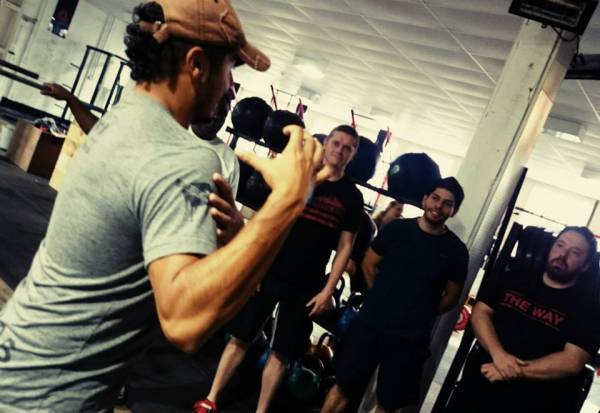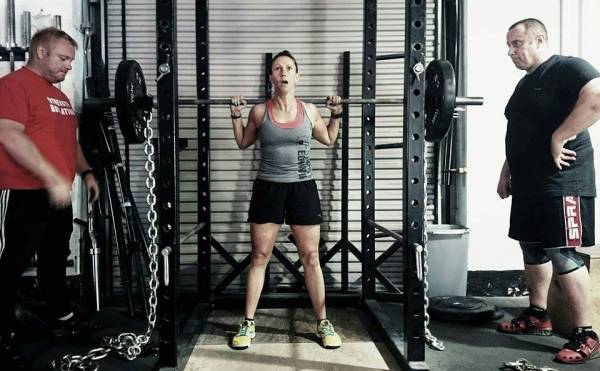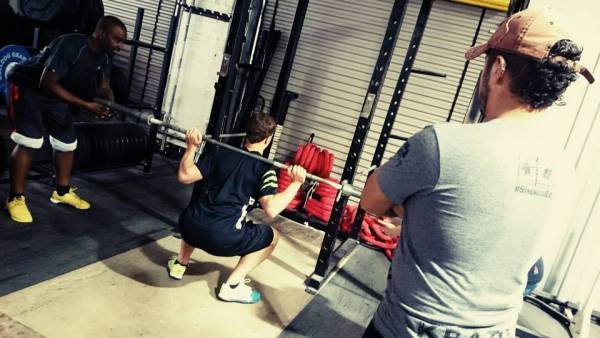Basics are basics and you should work them until you have rinsed them for all they are worth. Then turn them inside-out, backwards, and upside-down. Then turn them up the right way, and start again (a bit like a college student’s underwear.) I know you know this. I also know, as an athlete, you probably don’t do this.
Basics are boring, aren’t they? Boring to read, boring to do. So you have a choice. Stop reading here because I’m telling you something you don’t want to hear (or you think you know already.) Or read on in the hope that you might find something that doesn’t sit with you well at first, but if you admit it, you know needs attention.
“[If] the majority of athletes chose to go home rather than go hard, we would have a training population that is healthier and, yes, stronger.”
LEARN MORE: 10 Strength Training Principles That Will Make All the Difference
Read over these five training tenets with an open mind. Perhaps you have forgotten about some. Perhaps you have never thought about others. In any case, following training that covers these five basic principles will keep you healthy, injury free, and getting stronger in a way you can sustain for years to come.
You Need to Go Home, Not Go Hard
I’m going to put this out there – more often than not, athletes go hard when they should really go home. Here’s what I mean:
- If you are in pain, pushing through it is asking for trouble.
- If you are continually failing reps at the same weight, stop repeating poor movement patterns.
- If you are in the gym for hours grinding through a strength workout at a super slow pace because that’s all you’ve got today, it’s time to call it a day.
Just go home. And I’m not saying never push beyond the limit. Sometimes you need to find out where your limits are. And I’m not saying never push to your limits, either. I push myself to my limits all the time.
SLOW YOUR ROLL: 3 Training Approaches That Will Destroy You
I’m saying there is a mentality in the strength-training world that going all out is the ultimate goal and the universal solution. If, when faced with this two-pronged choice on a daily basis, the majority of athletes chose to go home rather than go hard, we would have a training population that is healthier and, yes, stronger.
“If you’ve been self-taught, rarely coached, or coached not-so-well, chances are you’ve picked up some bad habits along the way.”
You Need Coaching
Everyone needs coaching. Groove in poor movement patterns and they are a pain in the ass (probably literally in the case of squats) to re-groove. Fail to utilize your core and posterior chain correctly, and your body will find other, dysfunctional ways to do so. If you can’t get yourself coached on a regular basis do yourself a favor and enroll in a course.

And stop seeking out the super advanced courses. If you’ve been self-taught, rarely coached, or coached not-so-well, chances are you’ve picked up some bad habits along the way. Go to a basic lifting course and learn what you’ve missed out.
BE A GOOD STUDENT: Don’t Be That Lifter – Help Me Help You
My Strength and Power Level One Course covers not just basic lifting, but also the undebatable principles of physics and the human body. Those basics carry over to absolutely all lifting. Speaking of which…
You Need to Learn to Brace and Breathe Properly
These are the pre-basics basics. This is the stuff you should be doing every time on every lift (actually, on every single thing you do in the gym).
“[B]reathing into your belly” is not enough. That is old hat. We need to breathe in a way that maximizes total body tension and helps to protect the spine.
We spend a lot of time going over (and over and over) bracing and breathing techniques in my Level One course. I always find it crazy, when asked to breathe as if they were going to squat their max, just how many athletes will fill up their chests with air. This leads to weak core musculature and, sooner or later, injury. If you know this, then you probably know that breathing into your belly is the answer, right?
LEARN MORE: Bracing, Breathing, and Belts – A Lifter’s Guide
But “breathing into your belly” is not enough. That is old hat. We need to breathe in a way that maximizes total body tension and helps to protect the spine. The whole spine. That means taking a breath that pushes out to fill your whole trunk with air.

You Need Health Before Performance
If you’ve skipped some of these basics and ended up doing yourself an injury, then you have no business piling high-end performance goals on top of this mess. I don’t want to hear about how your lifts are going down, how you’re losing or gaining weight, or whatever the opposite of your performance goals are.
You have a health goal to fix before we can start talking about performance goals again.
Pain is a cry for help from your body. Pain that lessens when you warm up still counts. My colleagues Andrew Read and Robert Camacho, two of my favorite authors on Pulse Beat Fit, have both written about this recently.
If this describes you, then your priorities should be getting your body to function properly again. I’d better not hear talk of maxes or personal bests. Those will come. You need to get yourself up and running first (literally, if Andrew has anything to do with it).
READ THIS: So You Think You’re Badass? 12 Tell-Tale Signs
You Need to Keep Your Programming Simple
I’ve lost track of the amount of times people ask me about the Russian Squat Routine, or the Smolov Squat Routine. Actually, that’s probably my fault. I did write an article comparing the two, after all. But even in that article, I advised that training protocols should be kept as simple as possible for as long as possible. More complex routines should be saved for later down the line, if and when they are even required.
“My most successful strength-building periods are those where the programming is super simple.”
How long have you been lifting? I mean, consistently lifting, with intent and purpose? And out of that time, how long have you stuck to basic linear progression – adding weight each session, deloading, and starting again – until you have truly leveled out? If the answers are in months rather than years, it’s time to go back to basics on your programming.

My most successful strength-building periods are those where the programming is super simple. And that applies to programming for my athletes, too. Quitting simple approaches in favor of fancy variations is leaving gains on the table.
RELATED: How to Create Perfect Training Sessions and the Perfect Program
Simple programming for athletes leaves less open to interpretation, too. This means they follow the programming as it was set by the coach. Which means the true intent of the coach is being carried out. Which, if your coach is up to scratch, means getting good and consistent progress.
What’s Your New Training Pledge?
Right, let’s see if we’ve got anywhere. What’s the one, most important basic training principle you need to revisit? And how are you going to do it? Not what you feel other athletes need to do – what you need to do.
I’ll go first: I pledge to put myself into a coached situation at least once a month. I know these opportunities won’t just land on my lap. I will actively seek and push for them.
Your turn – post your go-back-to-basics pledge to yourself below. Because basically, it’s down to you.
Photos courtesy of Strength Education.






